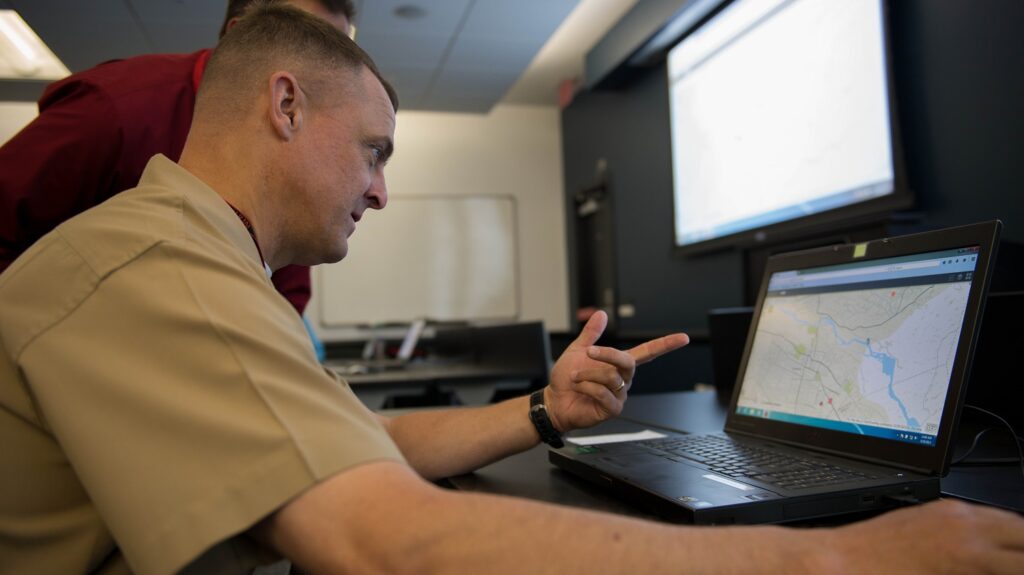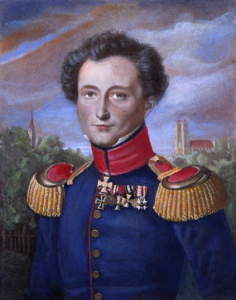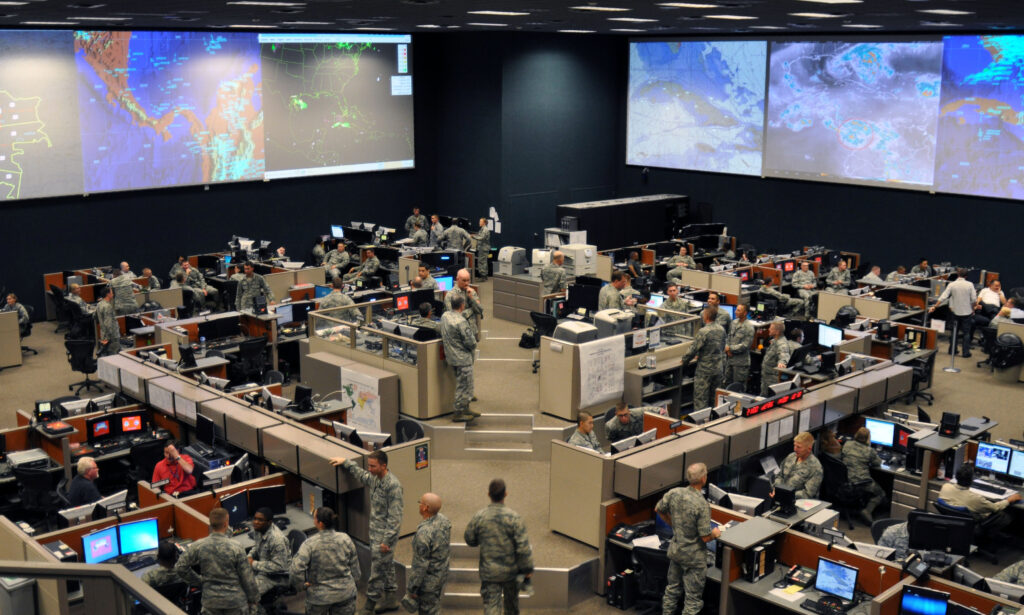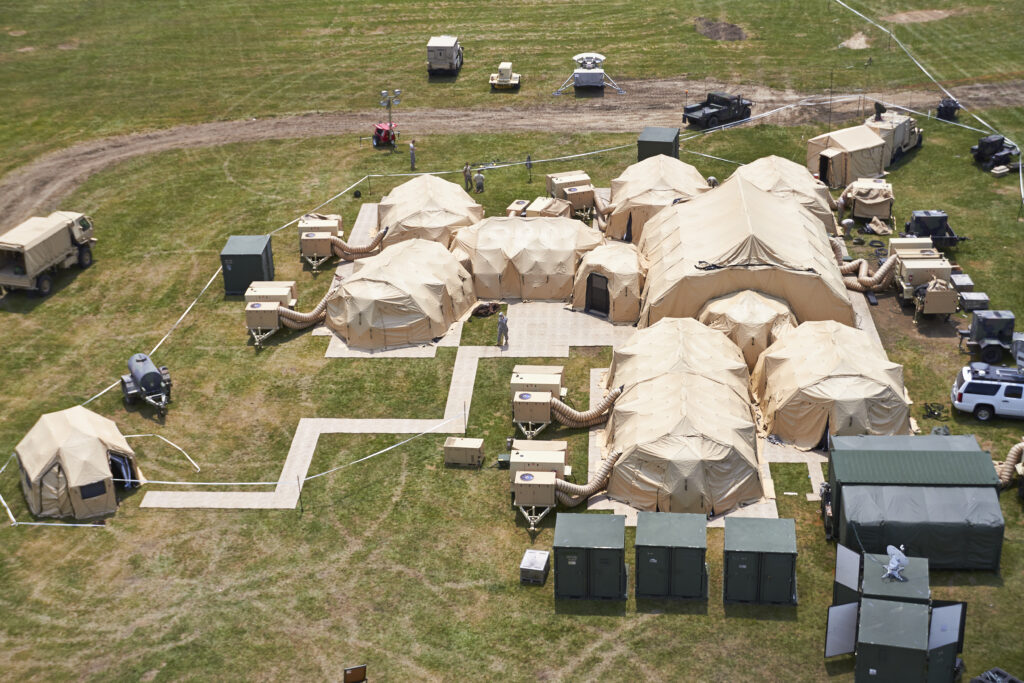
Then-Brig. Gen. Michael Groen works on a Marine Corps intelligence-sharing system.
WASHINGTON: Sure, the director of the Joint Artificial Intelligence Center loves cutting-ege technology. But when he talks about what AI can do for combat commanders, he goes back to Clausewitz.
“Clausewitz always talks about this coup d’oeil,” Lt. Gen. Mike Groen told me, “this insight that some commanders have. Well, that insight comes from understanding your own capabilities, and understanding the enemy’s capabilities, and being able to simulate in your mind, ‘well if I move left, here’s what’s going to happen. Or, if I move right, here’s what’s going to happen.’
“You can use AI to do all those things,” Groen said. “It’s not going to turn everybody into a Napoleon. But at the speed that combat is going to be executed, you have to have that information. You have to have that fingertip feel, or things are going to go so fast that you will always be behind.”
Build The Virtual Hilltop

Carl von Clausewitz
Two hundred years ago, a general like Napoleon could stand atop a strategically located hill and survey the entire battlefield with their eyes and make snap decisions based on their read of the situation – what the French called coup d’oeil. If the enemy was advancing on the flank, or hard-pressed troops were falling back, the commander could see it and dispatch an aide on horseback with verbal orders. The best generals developed an intuition the Prussians called fingerspitzengefühl, the “fingertip feeling” for the ever-changing shape of battle.
But as early as the US Civil War, battles like Gettysburg got too big for one commander to see everything. The Industrial Age solution was telegraphs, telephones, radios, and bureaucracy: legions of staff officers, organized in sections and sub-sections for intelligence, logistics, planning, personnel, and on and on, methodically reviewing reports and compiling them for the commander.
That mostly worked in World War II. But in a 21st century conflict of hypersonic missiles, anti-satellite weapons, and cyber attacks, the balance of battle can tip in minutes – while the staff officers are still filling out their newest PowerPoint.
“Today, you have a large command post,” Groen told me. “You have tents full of people who are on phones, who are on email, who are all reaching out and gathering information from across the force…. You might have dozens or hundreds of humans just watching all of that video [from drones and satellites] to try to detect targets.”
Then, using chat rooms, sticky notes, and old-fashioned yelling, staff officers have to share that information with each other, sort it, make sense of it, and briefing the commander. If the commander asks for data the staffers don’t have, they have to go back to their phones and computers. The cycle – what the late Col. John Boyd called the OODA loop, for Observe, Orient, Decide, & Act – can take hours or even days, and by the time the commander gets answers, the data may be out of date.

12th Air Force Combined Air Operations Center (CAOC).
“It’s really hard on commanders to make good decisions, because you don’t know what data in there is actually good, what data is actually missing,” Groen said. “If you are using your manual processes… things like emails and text messaging, phone calls, to try to coordinate what’s going on and understand what’s going on around you…. the enemy will always have tempo advantage.”
In other words, by the time you respond to the Step One of the enemy’s plan, they may be already executing Step Three. That’s exactly what happened to the French high command in 1940, when their World War I-style staff processes couldn’t keep up with a German blitzkrieg powered by internal combustion engines and coordinated by radio from trucks, tanks and airplanes.
“If you lose that battle of tempo… you will just fall further and further behind,” Groen said. And the more complex the conflict, the more areas you can fall behind in: “Imagine…an enemy that can not only shift across the physical battlefield, but now can leverage cyber, can leverage space, can leverage all these things in an integrated way. It’s catastrophic,” he said. “A 20th century commander will not survive in that environment.”
And Groen means “survive” quite literally. Today’s manual staff processes require legions of staff officers clustered in one location so they can talk to each other face to face; diesel generators running hot to power all the electronics; and veritable “antenna farms” to receive reports, transmit orders, and download full-motion video from drones. Those visible, infrared, and radio-frequency signatures are all easy for enemy drones and satellites to detect.
“That makes my command post a huge target,” Groen said.

The 63rd Theater Aviation Brigade’s Tactical Operations Center (TOC), nicknamed the “TOC Mahal.”
But what if you could replace the humans doing the cognitive grunt work – watching surveillance video for enemy forces, tracking your own units’ locations and assignments and levels of supply – with AI? What if you could replace the constant radio chatter of humans checking up on one another with machine-generated updates, transmitted in short bursts? What if you could replace the ponderous staff briefing process with an AI-driven dashboard that showed the commander what they needed to know, right now, based on up-to-the-minute data?
Then, for the first time in 200 years, a single commander could see the whole battlefield at a glance, with a 21st century coup d’oeil. In a world of conflicts too big to see from any physical hilltop, however high, you could build a virtual hilltop for the commander to look down from.
“Now that commander is becoming much, much more effective, because now you’re making better decisions based on fact,” Groen told me, “and you’re doing it without the large footprint of a huge headquarters that is a rocket magnet.”
So how do you build a virtual hilltop high enough for commanders to see a 21st century conflict unfold in all its sprawling complexity? The military is now struggling to develop a meta-network linking all the services’ disparate forces across land, sea, air, space, and cyberspace – what’s called Joint All-Domain Command & Control (JADC2). And the only way to manage all that data, Groen said, is AI.
And how can the Joint AI Center help the rest of the Defense Department harness artificial intelligence for joint command & control? That’s the subject of Part II of this interview, coming tomorrow.
[Click to read Lt. Gen. Groen’s exclusive op-ed for Breaking Defense: Uncle Sam Needs AI, ASAP]
In a Taiwan conflict, tough choices could come for Big Tech
Washington could do more to incentivize tech companies to distance themselves from China, but CEOs should examine how they’d react to a fight in the Pacific, CSET’s Sam Bresnick and Emelia Probasco argue.


























